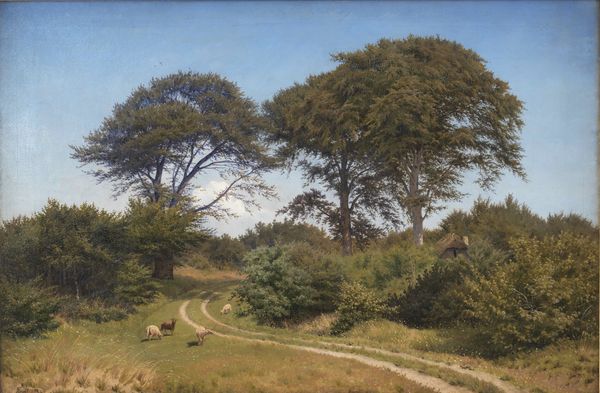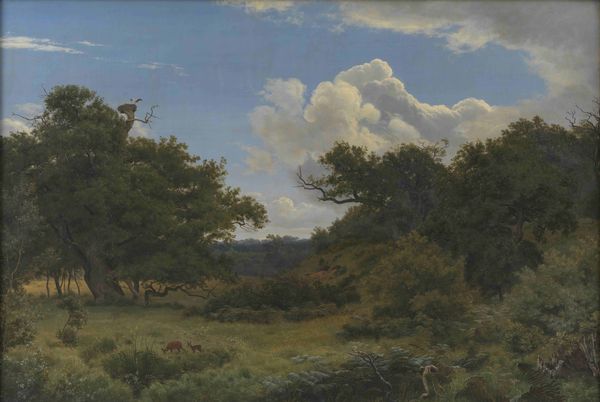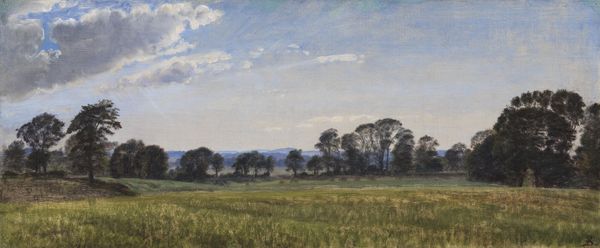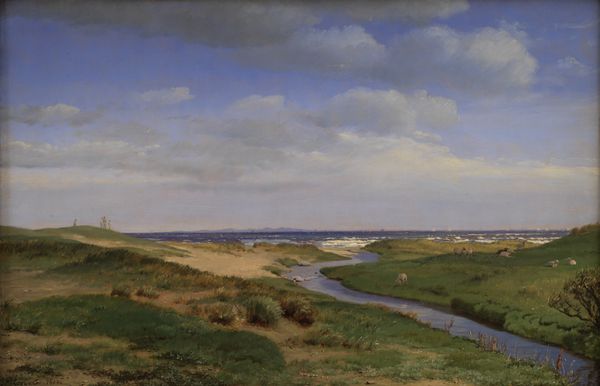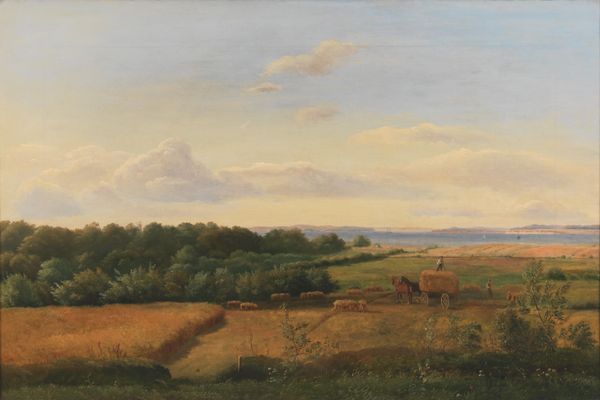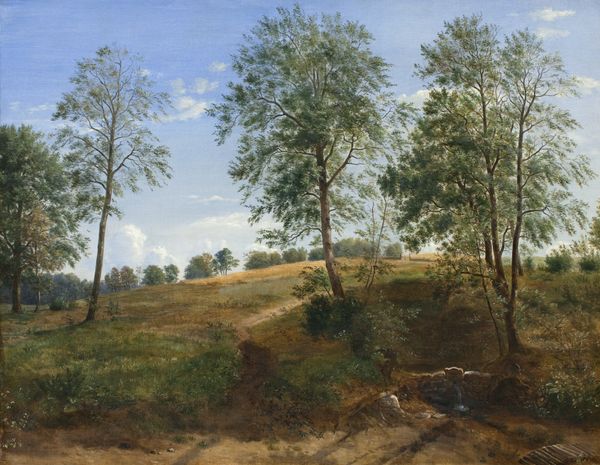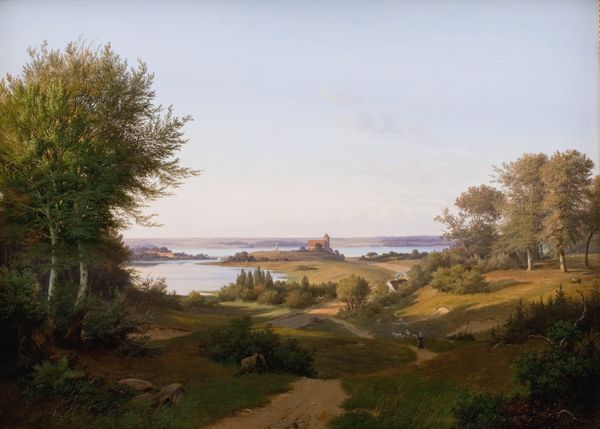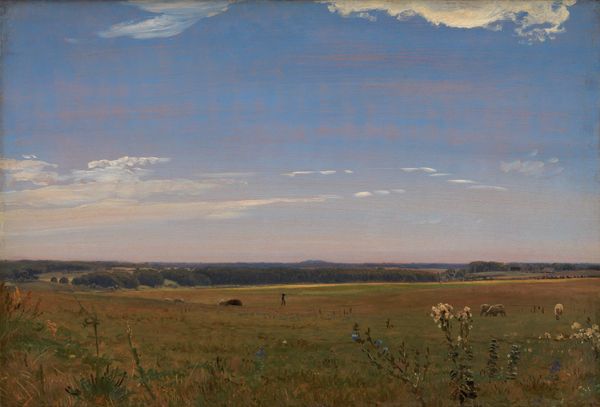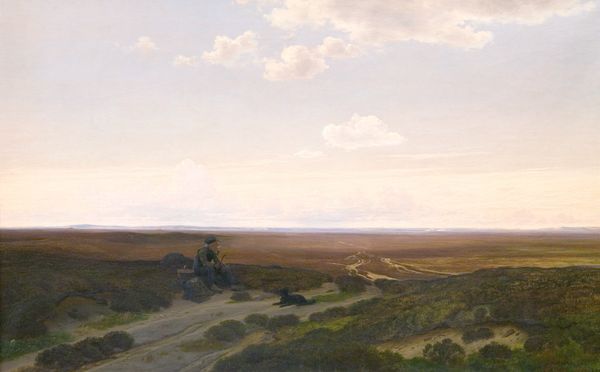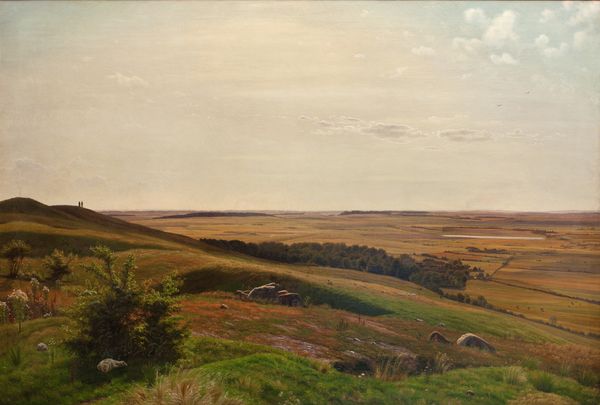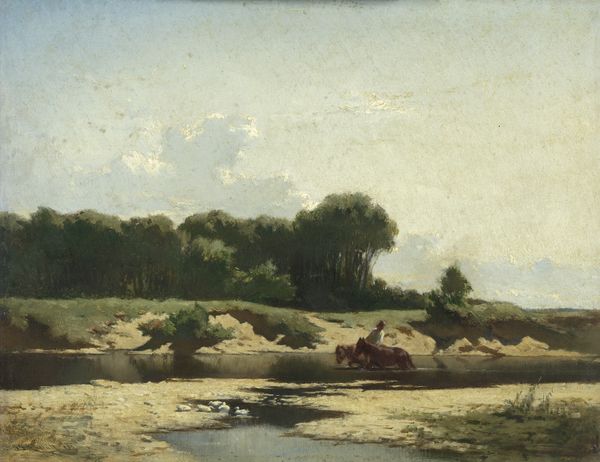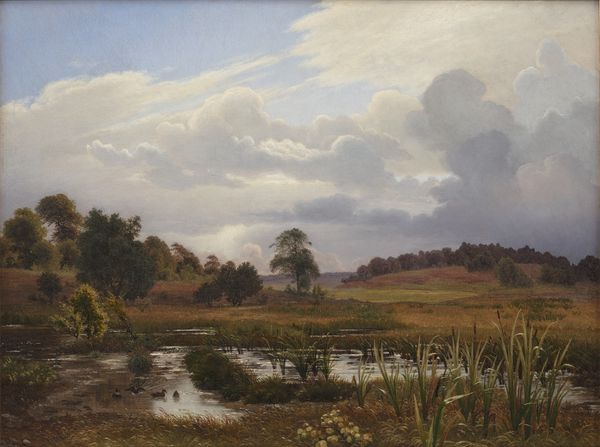
Zealand Landscape. Open Country in North Zealand 1842
0:00
0:00
painting, plein-air, oil-paint, canvas
#
painting
#
plein-air
#
oil-paint
#
landscape
#
canvas
#
romanticism
#
academic-art
#
realism
Dimensions: 94.5 cm (height) x 127.5 cm (width) (Netto), 112.3 cm (height) x 142.4 cm (width) x 10 cm (depth) (Brutto)
Johan Thomas Lundbye painted this oil on canvas of open country in North Zealand sometime in the 1840s. It exemplifies the Golden Age of Danish Painting, a period of intense national romanticism. After the Napoleonic Wars Denmark was in search of a new national identity. The political elites began to foster a sense of shared culture to unify the population around a new Danish identity. Lundbye’s painting participates in this project through its depiction of the Danish landscape. The geography of the country becomes a symbolic representation of the nation itself. Note how the uncultivated landscape of Zealand is presented as open and accessible. What cultural work is performed by a painting like this hanging in the National Gallery? What does it mean to put a landscape in a museum? To understand this painting fully, we could research the period's dominant political ideas and the institutional history of the museum.
Comments
statensmuseumforkunst almost 2 years ago
⋮
Here, Lundbye have strived to express the overall qualities of the Danish countryside, and with his chosen title he seeks to emphasise the general nature of the scene. A central feature of the painting is the winding road, which may be interpreted as an expression of the artist’s existential ruminations. In the summer of 1841 Lundbye painted two studies of the slightly hilly, open landscape near Frederiksværk, showing a small forest nestling between grassy hills in the middle of the painting. The following winter he used the two studies as the basis for this painting, which is crucially different from the studies in several ways. In his striving to identify the overall quality of the Danish countryside he has let the unique characteristics of specific sites fade and become obscured - you can only just make out the distinguishing features shown in the oil studies. Individual elements have been moved around, and the lines are noticeably more pronounced. There is a certain "simplicity and grandeur of line" here, an expression used by the art historian Niels Lauritz Høyen in 1838 when reviewing another Zealand landscape by Lundbye. For a couple of years Lundbye had worked his way towards simplifying his motifs on the one hand and embellishing them with many details on the other, and here this endeavour reached an acme.As an artist, Lundbye has distanced himself from his point of departure, Købke. At this point, his panoramic depictions of nature and the sweeping lines are more reminiscent of the landscape painter Louis Gurlitt from Holstein, who did similar work in several of his paintings. The mossy boulders and windswept bushes in the foreground are significant additions compared to the studies; they help add depth to the remote background. The great sense of joy that Lundbye invested in this part of the painting undoubtedly owes a debt to the Norwegian artist J. C. Dahl. The most significant change in the composition, however, is the addition of the road. Indeed, roads of this kind – winding their way through the landscape with no visible end in sight – is a recurring feature of Lundbye’s paintings. In view of Lundbye’s restlessness, anxiety, and existential musings it is tempting to interpret this road as a symbol of unresolved life goals.When Lundbye selected this motif he was undoubtedly searching for a landscape that seemed untouched. He has not, however, found a piece of countryside untouched by human hand. On Zealand almost all of the open land had been cultivated for agriculture. But he did avoid the tilled field, opting instead to show the rather wilder common. Lundbye exhibited the painting in 1842 under the title Zealand Landscape in order to accentuate the general nature of the motif - the subtitle is a later addition pinpointing the location.
Join the conversation
Join millions of artists and users on Artera today and experience the ultimate creative platform.
statensmuseumforkunst almost 2 years ago
⋮
Like other artists of his generation, Lundbye departed from the capital to depict Denmark’s landscapes. Yet even back then, there was very little untouched countryside left in Denmark. Almost all the open land had been tilled for fields. In lieu of “real” nature the artist opted to paint a relatively wild commons used as a pasture as this would create the impression of unspoilt landscape. He found the motif near his parents’ home in North Zealand. But he did not depict a particular location. Rather, he pieced together his scene from parts of different areas in the region. He wished to accentuate the general and typical aspects of landscapes, not a specific site. He himself simply called the painting “Zealand Landscape”.
